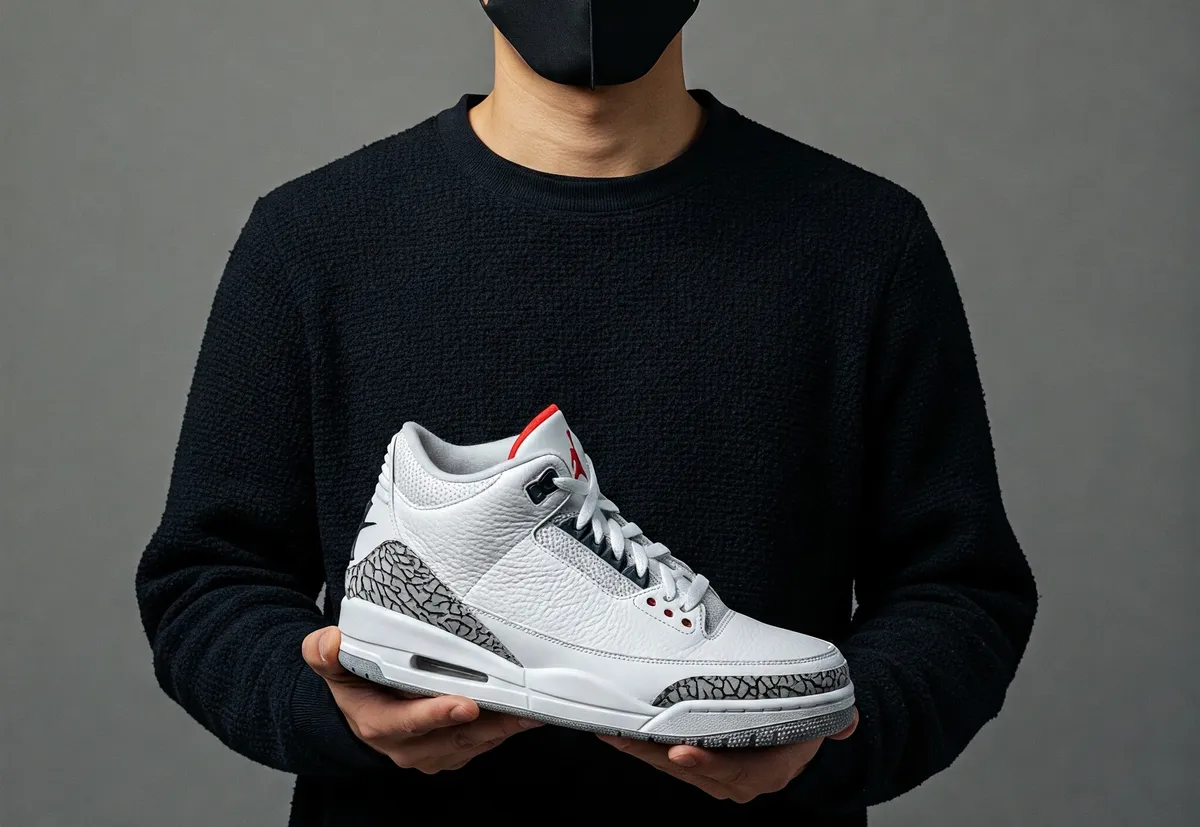The love for sneakers transcends the simple act of putting on a pair of shoes. For many, these objects become symbols of identity, status, nostalgia, and even a form of artistic expression. But what lies behind this passion that drives millions of people around the world to collect, display, and in some cases, spend fortunes on rare pairs? This article delves into the psychology that explains the fascination with sneakers and the motivations behind the collecting behavior, exploring everything from basic human instincts to modern cultural and social influences.
1. The Human Instinct to Collect: An Evolutionary Perspective
The act of collecting is not something new or exclusive to sneaker enthusiasts. In fact, it dates back to the origins of humanity. Anthropologists suggest that our ancestors had a natural impulse to accumulate resources – food, tools, or any item that could ensure survival or comfort. This behavior has evolved over time, but the instinct to gather and preserve valuable objects remains ingrained in our brains.
In the case of sneakers, this instinct manifests symbolically. A pair of Air Jordan 1s or a rare Nike SB does not guarantee physical survival, but it offers a sense of emotional and social security. Psychologically, collecting sneakers can be seen as a modern form of “hunting and gathering” – an echo of our ancestors who sought valuable items to display their skill or status within the group. Studies in evolutionary psychology indicate that this behavior is linked to our innate desire for control and predictability in a chaotic world. Having an organized collection of sneakers gives the collector a sense of dominion over their environment, even if it’s just within a specific niche.
Moreover, the act of collecting activates the brain’s reward system. When a collector finds a rare pair or completes a set, there is a release of dopamine, the neurotransmitter associated with pleasure and motivation. This cycle of seeking and conquering fuels the ongoing passion for the hobby, transforming it into something deeper than a mere pastime – for many, it becomes an essential part of who they are.
2. Identity and Self-Concept: Sneakers as an Extension of the “Self”
Another fundamental aspect of the psychology behind the love for sneakers is the role they play in shaping identity. In contemporary society, what we wear – especially what we put on our feet – communicates who we are or who we aspire to be. Sneakers, in particular, carry a cultural significance that goes beyond their functionality. A pair of Yeezys can signal modernity and connection to pop culture, while a vintage Air Max 90 can evoke nostalgia and authenticity.
The theory of self-concept, widely studied in social psychology, suggests that people shape their self-perception based on three pillars: the real self (who we are), the ideal self (who we want to be), and the social self (how others see us). Collecting sneakers allows individuals to align these three aspects. For example, someone who sees themselves as a sneaker culture connoisseur might seek out rare pairs to reinforce this self-image, while displaying them on social media validates this identity to others.
For collectors, sneakers are not just objects – they are extensions of their personality. A study published in the Journal of Consumer Research explored how material goods can become “sacred” to their owners, carrying deep emotional meanings. A sneaker signed by an idol, like Michael Jordan, or worn during an iconic moment, can be treated with almost religious reverence, stored in special boxes or displayed as trophies. This emotional attachment transforms collecting into a journey of self-discovery and self-affirmation.
3. The Power of Nostalgia: Why Sneakers from the Past Attract Us
Nostalgia plays a crucial role in the love for sneakers, especially among those who collect retro models or limited editions from past decades. Psychologists assert that nostalgia is a powerful emotion that connects us to happy and simple moments in our lives. For many collectors, a pair of Nike Air Force 1s or Reebok Pumps evokes childhood memories, like watching basketball games on TV or dreaming of being like their sports heroes.
This phenomenon is known as the “reminiscence effect” – the tendency to recall positive past events more vividly than the present. Brands like Nike and Adidas capitalize on this feeling by re-releasing classic models or collaborating with cultural figures that resonate with these memories. For example, the re-release of the Air Jordan 11 “Bred” in 2019 was an instant success, not just because of its design, but because it harkened back to the 90s, a golden era for basketball and sneaker culture.
Nostalgia also creates a sense of continuity between the past and the present. Collecting old or recreated sneakers allows fans to relive a part of their personal history while sharing it with a new generation. This emotional attachment explains why some are willing to pay thousands of dollars for a “deadstock” (never worn) pair – it’s not just about the sneakers themselves, but what they represent.
4. Status and Social Capital: Sneakers as Cultural Currency
In social psychology, the concept of social capital refers to the value we derive from our connections and status within a group. In the world of sneakers, owning rare or exclusive pairs elevates the collector’s status, functioning as a kind of “currency” within the sneakerhead community. A pair of Off-White x Nike or a Travis Scott SB Dunk is not just footwear – it’s a symbol of exclusivity, knowledge, and privileged access.
This phenomenon is linked to the theory of distinction, proposed by sociologist Pierre Bourdieu. According to him, people use material goods to differentiate themselves from others and assert their social position. In the context of sneakers, this is evident in the endless lines for limited releases, online raffles, and the resale market, where prices can soar to tens of thousands of dollars. Owning a coveted pair demonstrates that the collector “belongs” to a select circle, an elite within the sneaker subculture.
Moreover, the rise of social media has amplified this dynamic. Platforms like Instagram and TikTok have turned the display of collections into a public spectacle, where likes and comments reinforce the collector’s social capital. A video of unboxing a rare pair can go viral, elevating the owner’s status and solidifying their reputation in the community. Thus, the love for sneakers becomes not just a personal passion, but a social performance.

Work Sneakers: The Best Casual Models for the Office

Nike Shoe Size Conversion Chart – BR / US / UK / EUR / CM

Sneakerhead Dictionary: Essential Words, Slang, and Acronyms of Sneaker Culture

The Journey of the Nike Dunk: A Timeless Story of Courts, Streets, and Culture

Cheap sneakers in Miami: Discover 12 stores and 4 Outlets to buy more and pay less!
5. The Dopamine of the Hunt: The Thrill of Finding the Perfect Pair
One of the most addictive aspects of sneaker collecting is the thrill of the chase. Psychologically, this “hunt” activates the brain’s reward system in a way similar to gambling or adventure sports. The uncertainty – whether you’ll secure a release, find a forgotten pair in a thrift store, or negotiate a good price in the resale market – keeps collectors engaged.
This process is known as “reward anticipation.” Neuroscience studies show that the brain releases more dopamine during the expectation of a reward than upon receiving it. For sneakerheads, the moment of clicking “buy” on an online drop or opening an untouched box is almost as gratifying as wearing the sneakers. This adrenaline rush explains why many collectors keep their pairs “on ice” (unworn) – the conquest is the true prize, not necessarily the use.
Scarcity also intensifies this emotion. Brands like Nike and Adidas artificially create limited supply to increase demand, a tactic known as scarcity marketing. When a release sells out in seconds, the winners feel a mix of relief and triumph, while the losers are motivated to try again. This cycle of highs and lows keeps the sneaker community in constant motion, fueling the passion for the hobby.
6. Community and Belonging: The Social Side of Collecting
Although sneaker collecting may seem like a solitary activity, it is deeply social. Events like Sneaker Con, Discord groups, and online forums bring together thousands of enthusiasts to share stories, trade pairs, and showcase their collections. This sense of belonging is one of the psychological pillars that support the love for sneakers.
The social identity theory, developed by Henri Tajfel, explains how we define ourselves in part by the groups we belong to. For sneakerheads, the community provides a space where their passion is validated and celebrated. Being recognized as an “OG” (original gangster, a term for respected veterans) or as someone with an impressive collection strengthens bonds within the group and gives meaning to the hobby.
This connection is also reinforced through shared narratives. The history of a model – like the Air Jordan 1 being banned by the NBA or the Puma Clyde being adopted by Bronx b-boys – becomes part of the community’s folklore, passed down from generation to generation. Thus, collecting sneakers is not just about owning objects, but about being part of something bigger.
7. The Dark Side: When the Love for Sneakers Becomes an Obsession
Although sneaker collecting brings joy and purpose, there is a potentially problematic side. For some, the quest for rare pairs can turn into compulsive behavior, akin to shopping addiction. The pressure to “stay relevant” in the community or keep up with releases can lead to excessive spending, debt, or even anxiety.
Psychologists warn that when someone’s personal value depends solely on material goods, like a sneaker collection, it can mask deeper issues such as low self-esteem or the need for external validation. Additionally, the resale market, with inflated prices and bots dominating releases, can generate frustration and resentment among fans, driving them away from the original spirit of sneaker culture.
However, for most, the hobby remains a source of joy and creativity. The key, as with any passion, is balance – recognizing when the love for sneakers enriches life rather than dominates it.
Conclusion: The Love for Sneakers as a Reflection of the Human Condition
The fascination with sneakers and the drive to collect them reveal much about human psychology. It is a blend of instinct, identity, nostalgia, status, and social connection – elements that define us as individuals and as a society. For sneakerheads, each pair tells a story, whether personal, cultural, or historical, transforming an ordinary object into something extraordinary.
More than just footwear, sneakers are a mirror of our desires and aspirations. Collecting them is a way to celebrate who we were, who we are, and who we want to be. In an ever-changing world, this passion provides an anchor point – a reminder that sometimes the simplest things can carry the deepest meanings.

Work Sneakers: The Best Casual Models for the Office

Nike Shoe Size Conversion Chart – BR / US / UK / EUR / CM

Sneakerhead Dictionary: Essential Words, Slang, and Acronyms of Sneaker Culture

The Journey of the Nike Dunk: A Timeless Story of Courts, Streets, and Culture


